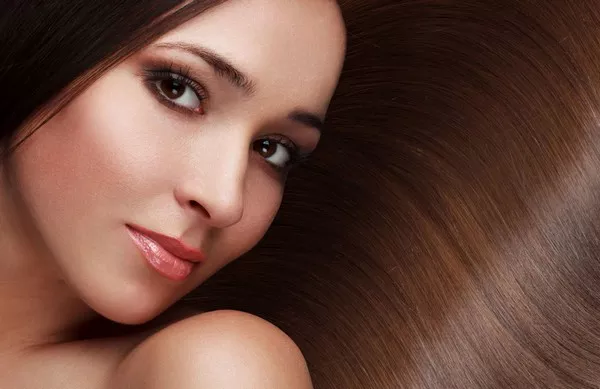Nurturing and Transforming Your Natural Black Hair Using Gentle Techniques and Careful Styling
Natural black hair is a beautiful and versatile texture, but many individuals desire the option to switch up their look occasionally by straightening their locks. However, chemical relaxers and excessive heat can cause damage and weaken the hair over time. The good news is that there are alternative methods to achieve straightened hair without resorting to harmful chemicals or heat styling tools. In this article, we will guide you through effective techniques and gentle styling practices to straighten your natural black hair while maintaining its health and vitality.
Preparing Your Hair for Straightening:
Before embarking on the straightening journey, it’s essential to start with healthy hair. Here are a few steps to prepare your hair for the process:
a. Deep Conditioning:
Begin by thoroughly moisturizing your hair with a deep conditioner that is rich in natural ingredients like shea butter, coconut oil, or aloe vera. This step will ensure your hair is hydrated and less prone to breakage during the straightening process.
b. Trim Split Ends:
Regular trims are crucial for maintaining healthy hair. By trimming split ends, you prevent further damage and promote the growth of stronger, straighter strands.
c. Detangle Gently:
Use a wide-toothed comb or your fingers to detangle your hair gently. Starting from the ends and working your way up will minimize breakage and prevent unnecessary stress on your hair.
The Power of Protective Styling:
Protective styling is key to minimizing breakage and maximizing hair health during the straightening process. These styles not only shield your hair from environmental damage but also keep your hair strands from rubbing against each other, which can cause tangling and breakage. Here are a few popular protective styles:
a. Braids: Opt for loose, medium-sized braids that are not too tight to avoid excessive tension on your hair. This style will protect your hair while encouraging length retention.
b. Twists: Twists are a versatile protective style that can be worn in various sizes. They are an excellent option for retaining moisture and preventing breakage.
c. Buns: Creating a bun with your hair, using gentle accessories like scrunchies or satin bands, helps protect your ends and keeps your hair strands in place.
The Magic of Stretching Techniques:
Stretching your natural hair before straightening can help achieve a smoother look and make the straightening process easier. Here are a few stretching techniques to try:
a. Banding: Divide your hair into sections and wrap elastic bands along the length of each section, starting from the roots. This technique stretches the hair while minimizing heat or tension.
b. African Threading: Using thread or yarn, wrap your hair from the roots to the ends. This method stretches your hair without the need for heat, providing a great base for straightening.
c. Bantu Knots: Divide your hair into sections and twist each section into a tight knot. Bantu knots stretch the hair and create defined curls that can be easily straightened.
Straightening Without Heat:
It is entirely possible to straighten natural black hair without heat. Here are a few methods to consider:
a. Roller Sets:
After stretching your hair, apply a setting lotion or leave-in conditioner and roll your hair on flexi-rods or perm rods. Allow your hair to air dry or sit under a hooded dryer until fully dry. Once the rollers are removed, you will have beautifully straightened hair without using heat.
b. African Threading Method:
Follow the African threading technique mentioned earlier, but this time, instead of creating knots, stretch your hair tightly with the thread. Leave it overnight or until completely dry, and then carefully remove the thread. You will be left with straightened hair that is free from heat damage.
c. Banding Method:
Apply a moisturizing product or setting lotion to your stretched hair. Then, divide your hair into sections and wrap elastic bands along the length of each section. Leave the bands in overnight or until your hair is completely dry. Gently remove the bands, and you’ll be amazed by the straightened results.
Maintaining and Preserving Your Straightened Hair:
Once you’ve achieved your desired straightened look, it’s important to maintain and preserve it for as long as possible. Here are some tips to help you do just that:
a. Avoid Humidity:Humidity can cause natural hair to revert back to its curly state. To combat this, use anti-humidity products or apply a small amount of oil to your hair to seal in the straightened style.
b. Protect Your Hair at Night: Sleep on a satin or silk pillowcase or wrap your hair in a silk or satin scarf to minimize friction and prevent frizz. This will help your straightened hair last longer.
c. Limit Manipulation: Minimize combing, brushing, or excessive styling during the time you want to maintain your straightened hair. This will prevent unnecessary breakage and help preserve the style.
d. Moisturize Regularly: Even though your hair is straightened, it still needs moisture. Use a lightweight moisturizer or hair oil to keep your hair hydrated and prevent it from becoming dry and brittle.
Conclusion:
Straightening natural black hair without chemicals or heat is not only possible but also a great way to maintain the health and integrity of your hair. By following these gentle techniques and careful styling practices, you can achieve a sleek, straight look while embracing and nurturing your natural beauty. Remember to prioritize the health of your hair throughout the process by deep conditioning, protective styling, and avoiding excessive manipulation. With these tips and tricks, you can confidently rock your straightened hair without compromising its strength and vitality. Embrace your natural beauty and enjoy the versatility of your beautiful, straightened tresses!

